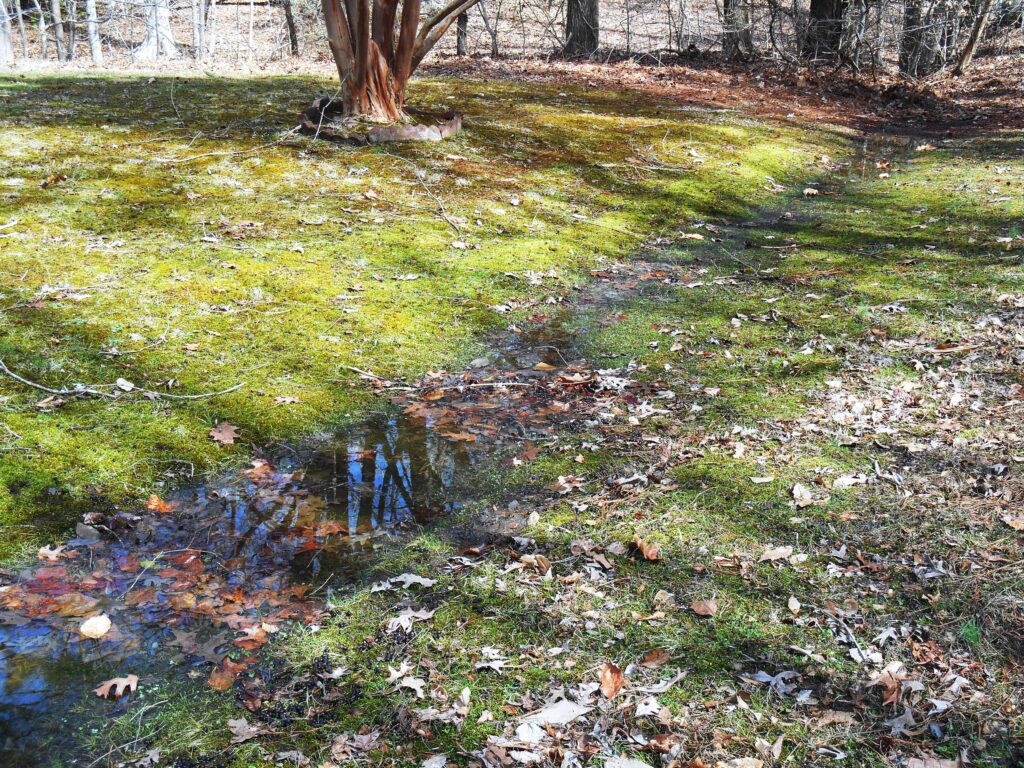Options for Autumn Leaf Clean-up
Leaves float on every strong breeze, covering our walks and driveway just hours after we last cleaned them. The many different species of trees in our community almost guarantee that we will have a long season of managing fallen leaves and pine tags. Leaves may begin to fall in August or September, particularly when the weather is dry. And some trees hold onto their leaves until the following spring. So cleaning up fallen leaves is more of an ongoing process than a one time project. There are several good options for what to do with our fallen leaves.
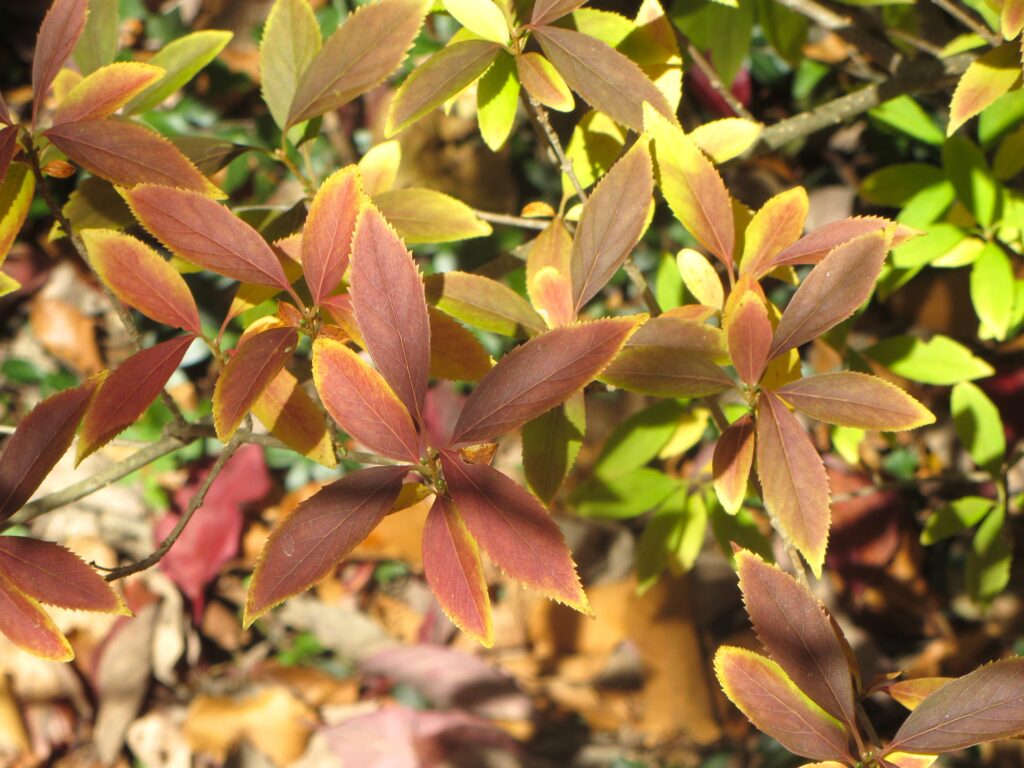
Forsythia is one of the earliest shrubs to bloom each spring.
Leaves Are a Part of Nature’s Plan
Everything in nature has a purpose and an important niche within the ecosystem. Leaves trap carbon, nitrogen and other elements and compounds from the air during the spring and summer. Tree roots also absorb dissolved minerals each day and many of these make their way to the leaves, where they are stored, along with water, carbon, and nitrogen, within each leaf’s cell structure. From a tree’s point of view, releasing its leaves in fall provides insulation over its root system for the winter. Minerals and nutrients return to the soil as these leaves decompose. It is an elegant recycling operation to renew the soil and naturally fertilize the trees. Deciduous trees are critically important for filtering and sequestering carbon, carbon monoxide and other ‘greenhouse gases’ from the air we breathe, even as they replenish our oxygen supply.
Leaves Provide Habitat and Food for Wildlife
Fallen leaves also provide food and habitat for many creatures. Many types of insects, like native bees, shelter among the leaves or in the soil under them. Insect eggs and larvae are deposited on leaves to overwinter before emerging in the spring. Some of these insects pollinate our flowers and others are important food for larger animals. Birds depend on leafy areas to hunt for insects among the leafy duff through the winter. Other invertebrates, like earthworms, surface under the leaves to gradually eat them and then slowly work their remains into deeper layers of the soil. Fungi and microbes also help to decompose the leaves and return their carbon and other nutrients to the soil.
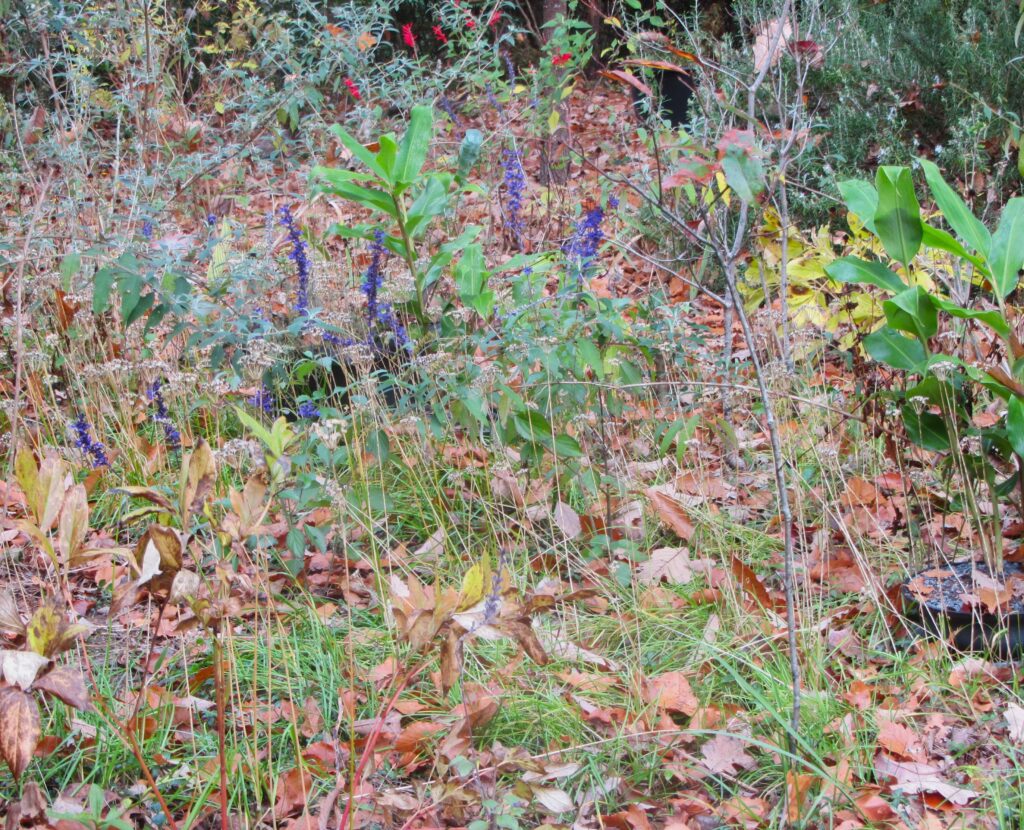
A planting bed may look untidy when covered by fallen leaves. But the leaves provide many benefits for the animals and plants that live in the garden.
Alternatives for How to Manage the Leaves
There are several ways for homeowners to take advantage of the leaves that fall in their yard as a natural resource to build better soil. Anyone with a large, wooded yard, can simply allow leaves to fall and accumulate in certain areas. Also allowing perennial plants to stand after a killing frost provides further habitat for overwintering native insects, birds, and small animals that eat their seeds or shelter in their stems.
Yet it isn’t appropriate to leave leaves lying in all parts of our yard. Leaves left on a lawn will harm or kill it. Likewise, leaves left on mossy parts of the yard will eventually kill off the moss by shading it. We may not want to leave leaves in some perennial or grass beds because they won’t look neat and attractive through the winter.
Uses for Shredded Leaves
Mowing a leaf covered lawn with a mulching lawn mower chops both leaves and grass into a fine mix for composting. Left in place on the lawn, it will decompose and feed the lawn without smothering it. Bagged, this rich mix may be emptied out under trees and shrubs as winter mulch or added to the compost pile. Avoid composting any grass that has been treated with pesticides, however.
Consider shredding fallen leaves cleaned up from porches, patios, ditches, and driveways. Add them to a compost pile or spread them under trees and shrubs in this neater form that is less likely to blow around. Shredded leaves will decompose into humus even faster than whole leaves. Leaves should be appreciated as ‘free fertilizer.’ Not only do leaves enrich the soil, but they also protect bare soil from erosion during fall and winter rains.
Winter in the Garden: To Do, To Do Less, and What to Avoid
Get a head start on next year’s garden and protect your soil by covering vegetable and ornamental beds with several inches of shredded leaves. This is a form of ‘sheet composting’ where nature does the work and you don’t have to toss and mix the compost pile. Water the pile if it seems to dry out, to keep it active. Lay down plain cardboard (without coating or labels), newsprint, or brown paper grocery bags where you want new landscape beds. The paper will smother the grass through the winter while the leaves decompose. By spring, you can plant into this newly prepared ground and add additional mulch.
Keep Leaves Out of Waterways
Some homeowners rake or blow any leaves that have fallen near their home and then dump the leaves into a nearby ravine. This is a good solution unless there is a seasonal creek in the ravine that feeds a pond or waterway. Leaves are so rich in nutrients that they can cause algae blooms the following summer if they are decomposing in local waterways.
Leaves and sticks also clog up storm drains, culverts, ditches, and creeks, making it harder for water to properly drain away during a heavy rain. Clogged drain ways cause ponding of water on roads and in yards. And debris blocking the flow of storm water can potentially cause flooding after an unusually heavy rainstorm. If you have a city or county-maintained drain around your property, please help to keep it clear of leaves and other debris.
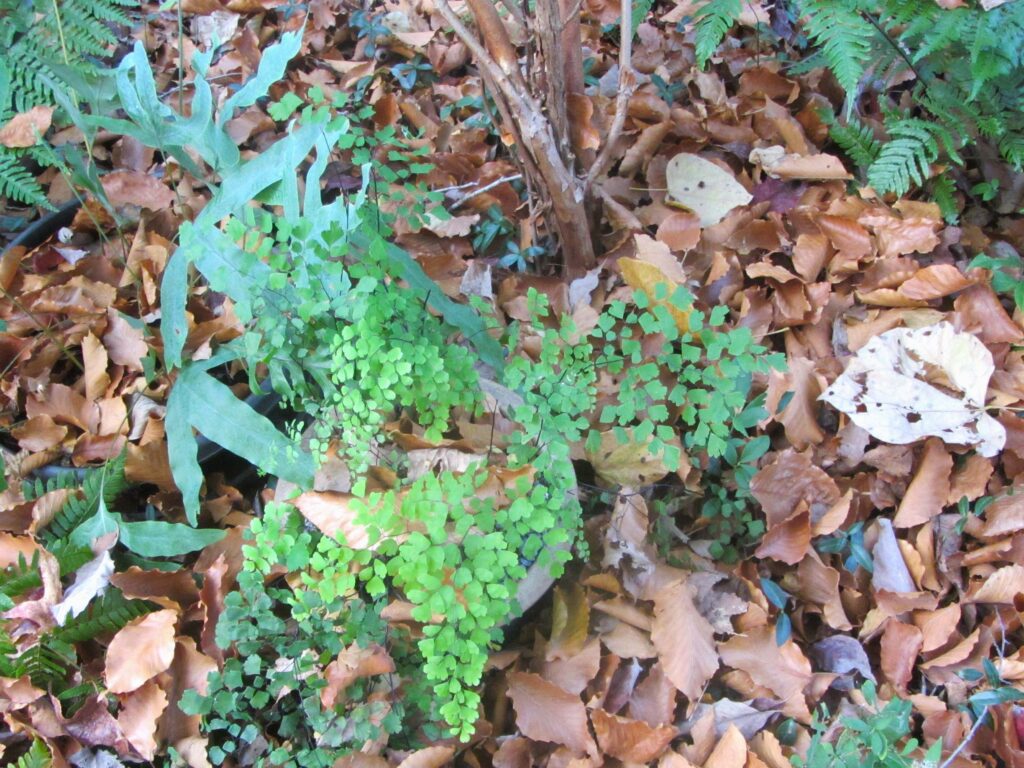
Fallen leaves can smother lawns, perennials, and container grown plants if not frequently cleared away. Once removed, they can be shredded and used as mulch, or bagged and sent off for composting.
Local Leaf Pick-Up Options
For homeowners who want to get leaves off of their properties, local municipal governments provide seasonal opportunities for leaf collections. Most compost the collected leaves so they are still used as the important resource leaves are.
Jame City County residents may drop off leaves free of charge at the Jolly Pond Convenience Center, 1204 Jolly Pond Road, daily between 7 a.m.-5 p.m. during these dates: Nov. 9- and Jan. 12. Leaves dropped off by residents will be accepted in clear bags no larger than lawn or leaf-size (40 gallons or less). County residents may also bring leaves in reusable containers, truck or trailer beds and are responsible for raking or dumping their leaves onto the leaf pile. Outside of these dates, residents must buy ‘coupons’ to drop off yard waste.
JCC will provide one round of curbside leaf collection in early December, scheduled by voting district. Leaves must be bagged in clear bags and left at the curb by 8 AM on the first day of collection. No other yard debris, such as downfall limbs, will be collected.
The City of Williamsburg will vacuum leaves raked to the curb five times between November and January. Routes for leaf collection, and other guidelines, may be found here.
York County also collects residents’ leaves left curbside in clear bags and takes them to the VPPSA composting facility where they are turned into high quality compost. Leaves are collected along county residential streets every two weeks between November 12 and January 20. The schedule and guidelines are here. Residents may also bring their bagged leaves year-round to the VPPSA Compost Facility located at 145 Goodwin Neck Road, Monday through Saturday, 8am—4pm.
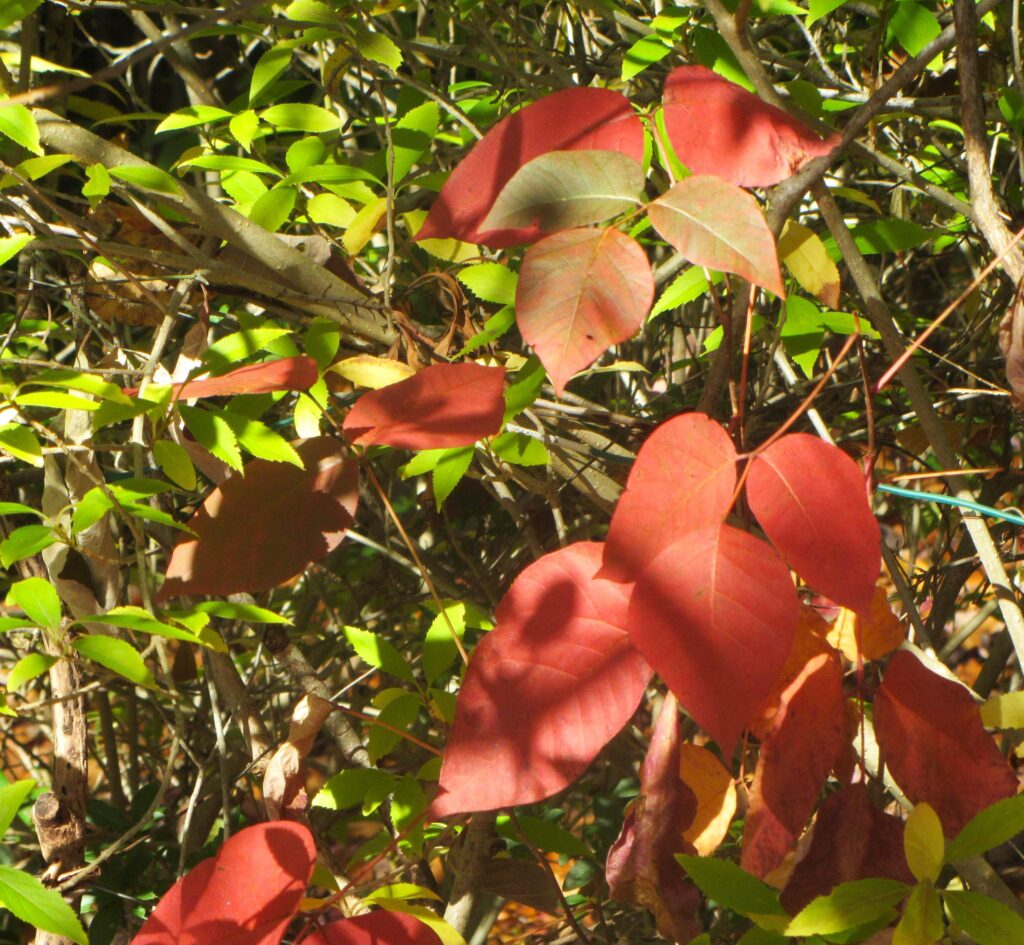
Poison Ivy turns scarlet in autumn before its leaves fall. It is beautiful, but causes serious skin inflammation and rashes. If burned, its poisonous oils travel in the smoke, affecting people even miles away. You can recognize this vine by its compound ‘leaves of three.’
Burning Leaves Causes Many Problems
Leaf burning isn’t permitted in our area, except in areas zoned A-1 for general agriculture. Burning leaves releases the carbon and other greenhouse gasses sequestered in each leaf in solid form back into the atmosphere as heat trapping ‘greenhouse gasses.’ The smoke also irritates the lungs and noses of many folks who have allergies or certain medical conditions, making it more difficult to breathe for everyone nearby. If poison ivy is burned, its poisonous resinous compounds, urushiols, travel in the smoke. When people breathe in urushiol with the smoke it can give them many symptoms of a poison ivy rash.

Leaves fall slowly over a period of several months in our area. Oakleaf Hydrangea may hang onto its leaves until spring.
Leaves For Free
If you aren’t blessed with an abundance of leaves from your own trees, but want leaves to compost for your own garden needs, you can obtain bags of leaves, free of charge, from James City County’s Solid Waste Division. Learn more here.
Transformation and Growth
Fallen leaves and pine tags are a precious natural resource that enrich our soils, feed and shelter invertebrate animal life, mulch and insulate the soil through the winter, and protect tree roots and perennial plants. Leaves also sequester air pollution in solid form. They are a part of the great ecological cycles of life that allow elements to transform from one thing into another, all the while nurturing new life. Let’s find practical ways to use this resource as good stewards of the land on which we live. Within every challenge lies the seed of an opportunity.
All photos by E. L. McCoy




